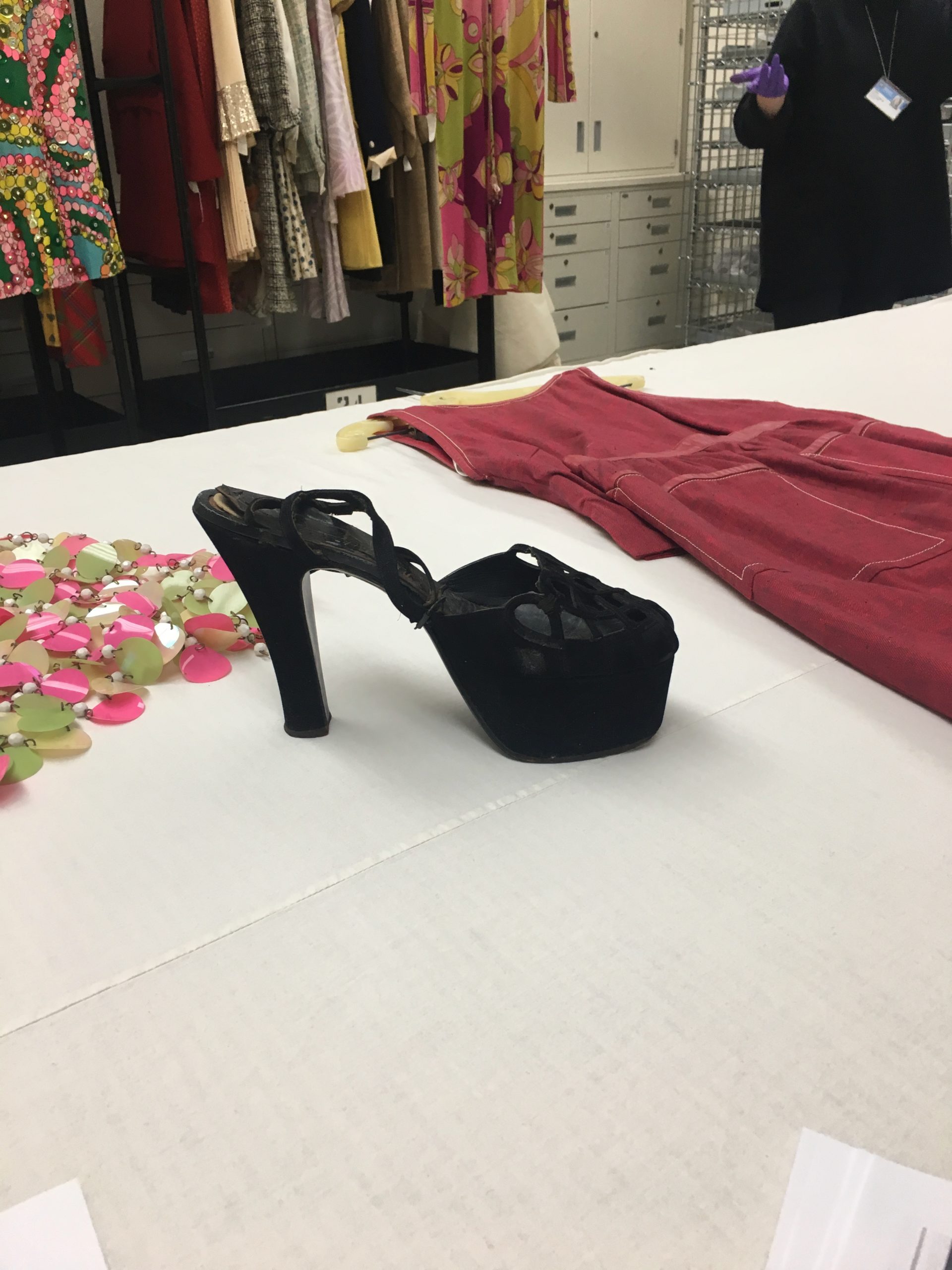On our recent study trip to New York, one of our first visits was to the Fashion Institute of Technology. Associate Curator at the Museum at FIT and former MA Documenting Fashion student, Emma McClendon showed us some highlights from the storeroom. We saw a range of items including everything from a decadent velvet evening coat from 1923 to a three-piece Chanel suit from 1965. One item that particularly caught my eye was a pair of black suede platform sandals. Emma asked us what year we thought they were from, and our guess was sometime in the 1970s, but it turned out the shoes were actually from 1949. High-heeled platform shoes are often associated with the 70s because of the rise of second-hand dressing.
The platform shoe rose to prominence in modern western fashion in the 1930s. The wedge heel had been a popular style in the 30’s, but in the second half of the decade the separation of the toe and heel sections created the trend of the platform shoe, which lasted well into the 1940s. Salvatore Ferragamo is credited with popularizing the style in the late 1930’s with shoes like his famous rainbow platforms. These early examples show the elevation of heel over the toes, which would become increasingly pronounced throughout the 1940s. In the example we were shown at FIT both the platform and the heel have been raised a considerable amount, and the difference between the platform and heel heights is more pronounced. By viewing both films and photographs from the 1940s the prevalence of the high-heeled platform shoe is obvious, but it has perhaps gained an even more immediate association with the 1970s.
In the 1970s there was an increased interest in second-hand dressing. Where in earlier decades buying clothes from a thrift shop was seen as something shameful, in the 1970s it became trendy. The ‘youthquake’ of the 1960s unleashed the trendsetting power of young people, especially teenagers. In the 1960s and 70s shopping for second hand clothes became popular within youth culture. Young girls began to buy the platform sandals that were popular in the 1940s, and restyle them to their own tastes. The popularization of vintage clothing led to our misidentification of the platform shoes as something created in the 1970s. The trend of shopping for vintage clothing has continued and even grown throughout the latter half of the 20th century and into the 21st century. Old styles regain popularity and maintain a place in the public imagination through this practice. The platform shoe is once again a stylish and desired item today, because there has been a resurgence of popularity for 70s styles. The cyclical popularity of the platform lends credence to the saying that everything old becomes new again.
By Olivia Chuba


